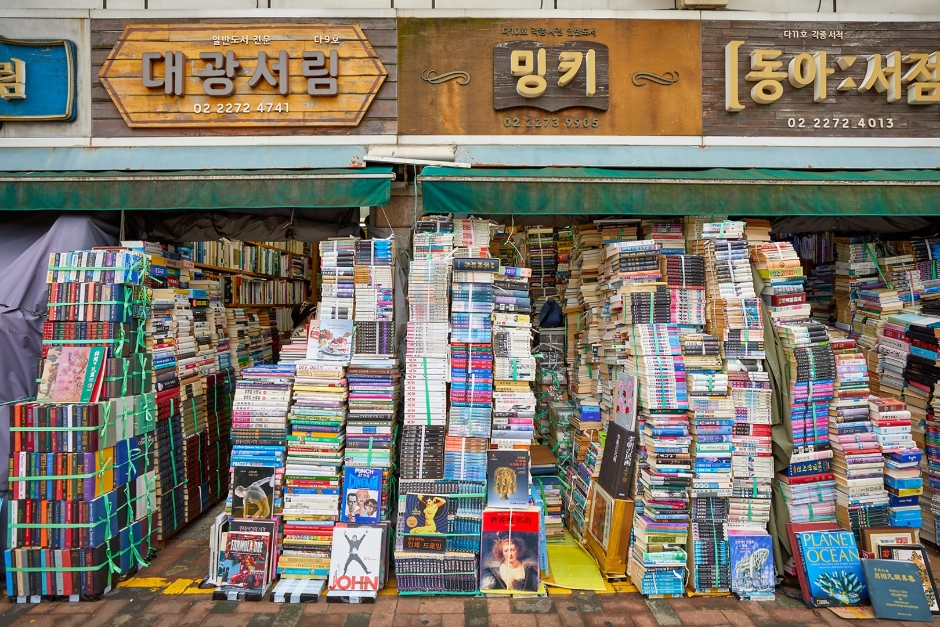Ziozia - Hyundai Dongdaemun Branch [Tax Refund Shop] (지오지아 현대동대문)
3.0Km 2024-04-18
(Eulji-ro 6-ga), 20, Jangchungdan-ro 13-gil, Jung-gu, Seoul
-
Nepa - Hyundai Dongdaemun Branch [Tax Refund Shop] (네파 현대동대문)
3.0Km 2024-04-16
7F, 20, Jangchungdan-ro 13-gil, Jung-gu, Seoul
-
Hottracks - Dongdaemun Branch [Tax Refund Shop] (핫트랙스 동대문점)
3.0Km 2024-04-18
20, Jangchungdan-ro 13-gil, Jung-gu, Seoul
-
Kyobo Book Centre - Dongdaemun Branch [Tax Refund Shop] (교보문고 동대문점)
3.0Km 2024-04-22
20, Jangchungdan-ro 13-gil, Jung-gu, Seoul
-
Samsonite - Hyundai Outlets Dongdaemun Branch [Tax Refund Shop] (쌤소나이트 현대아울렛 동대문점)
3.0Km 2024-04-22
20, Jangchungdan-ro 13-gil, Jung-gu, Seoul
-
Rogatis - Hyundai Dongdaemun Branch [Tax Refund Shop] (로가디스 현대 동부산점)
3.0Km 2024-04-22
20, Jangchungdan-ro 13-gil, Jung-gu, Seoul
-
Jigott - Hyundai Dongdaemun Branch [Tax Refund Shop] (지고트 현대동대문)
3.0Km 2024-04-22
20, Jangchungdan-ro 13-gil, Jung-gu, Seoul
-
Look Optical - Hyundai Dongdaemun Branch [Tax Refund Shop] (룩옵티컬 현대동대문)
3.0Km 2024-04-18
B1, 20, Jangchungdan-ro 13-gil, Jung-gu, Seoul
-
Fila - Hyundai Dongdaemun Branch [Tax Refund Shop] (휠라 현대동대문)
3.0Km 2024-04-23
7F, 20, Jangchungdan-ro 13-gil, Jung-gu, Seoul
-
Cheonggyecheon Old Books Street (청계천헌책방거리)
3.0Km 2023-12-22
20 Jangchungdan-ro 13-gil, Jung-gu, Seoul
Walking east along Cheonggyecheon Stream, which flows near Sewoon Plaza, you will see a cluster of small bookstores. Books published 30 to 50 years ago, and various out-of-date magazines are piled up in about ten bookstores. You can indirectly experience the old culture and history that formed the basis of K-content, and sometimes you can also find foreign books. Nearby is Dongdaemun Market, a wholesale market selling various subsidiary materials, and Pyounghwa Market (open from night to early morning), where you can browse clothing fabrics, which are excellent places to visit together.
![Ziozia - Hyundai Dongdaemun Branch [Tax Refund Shop] (지오지아 현대동대문)](http://tong.visitkorea.or.kr/cms/resource/11/2888911_image2_1.jpg)
![Nepa - Hyundai Dongdaemun Branch [Tax Refund Shop] (네파 현대동대문)](http://tong.visitkorea.or.kr/cms/resource/21/2888921_image2_1.jpg)
![Hottracks - Dongdaemun Branch [Tax Refund Shop] (핫트랙스 동대문점)](http://tong.visitkorea.or.kr/cms/resource/22/2890422_image2_1.jpg)
![Kyobo Book Centre - Dongdaemun Branch [Tax Refund Shop] (교보문고 동대문점)](http://tong.visitkorea.or.kr/cms/resource/24/2890424_image2_1.jpg)
![Samsonite - Hyundai Outlets Dongdaemun Branch [Tax Refund Shop] (쌤소나이트 현대아울렛 동대문점)](http://tong.visitkorea.or.kr/cms/resource/84/2890484_image2_1.jpg)
![Rogatis - Hyundai Dongdaemun Branch [Tax Refund Shop] (로가디스 현대 동부산점)](http://tong.visitkorea.or.kr/cms/resource/40/2890540_image2_1.jpg)
![Jigott - Hyundai Dongdaemun Branch [Tax Refund Shop] (지고트 현대동대문)](http://tong.visitkorea.or.kr/cms/resource/22/2889122_image2_1.jpg)
![Look Optical - Hyundai Dongdaemun Branch [Tax Refund Shop] (룩옵티컬 현대동대문)](http://tong.visitkorea.or.kr/cms/resource/26/2889126_image2_1.jpg)
![Fila - Hyundai Dongdaemun Branch [Tax Refund Shop] (휠라 현대동대문)](http://tong.visitkorea.or.kr/cms/resource/91/2889091_image2_1.jpg)

 English
English
 한국어
한국어 日本語
日本語 中文(简体)
中文(简体) Deutsch
Deutsch Français
Français Español
Español Русский
Русский